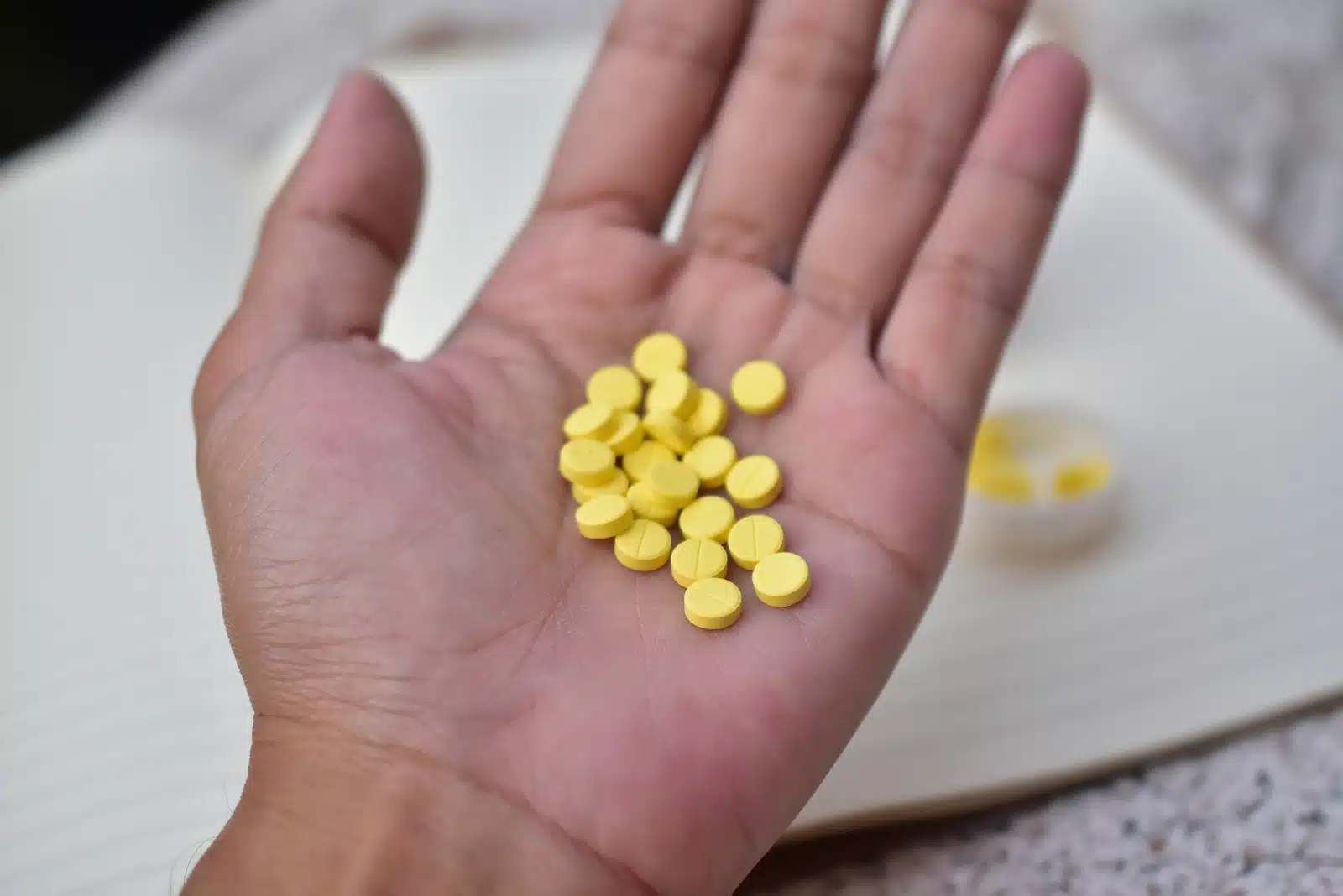Substances
How Long Does Percocet Stay in Your System?

Medically Reviewed By
Dr. Po-Chang Hsu, M.D., M.S
On July 7, 2025
Written By
Amanda Stevens, BS
Updated On July 7, 2025
Substances

Medically Reviewed By
Dr. Po-Chang Hsu, M.D., M.S
On July 7, 2025
Written By
Amanda Stevens, BS
Updated On July 7, 2025
Percocet typically remains in a person’s system for approximately one day. Even after it has left the bloodstream, Percocet can still be detectable by a drug test. The detection window will vary from approximately 2 to 90 days, depending on the type of drug test. While urine tests are the most common type of drug test, saliva tests and hair follicle tests are sometimes used for legal or employment purposes.
Failing a drug test or worrying about failing one could be a sign of an opioid addiction. A failed drug test can also compromise employment opportunities and result in possible legal consequences. If you’re taking Percocet without a prescription, it’s advisable to discontinue use well in advance of a drug screening, but opioids like oxycodone are typically not detectable after 3–4 days in urine and 90 days only in hair follicle tests. Opioid discontinuation may require the supervision of a medical professional to avoid serious withdrawal effects.
Percocet is a combination drug that contains both acetaminophen and oxycodone. Acetaminophen is an over-the-counter pain reliever and is the active ingredient in Tylenol. Oxycodone is a powerful opioid pain reliever available by prescription only.
Percocet is prescribed for the treatment of moderate to severe chronic pain. Because of its high potential for abuse and addiction, Percocet is only prescribed as a last resort when other non-narcotic pain relievers have failed. [1]
The DEA has classified Percocet as a Schedule II controlled substance, as are oxycodone and fentanyl; however, cocaine and methamphetamine are also Schedule II drugs, but they are not opioids. [2] Taking this medication without a prescription or using someone else’s prescription is a felony offense punishable by law.
Generally, Percocet will clear the body within 24 hours, but it can still be detectable by drug tests for much longer. When you’re tested for the presence of narcotics, the drug test looks for oxycodone, the opioid contained in Percocet. [3]
Immediate-release oxycodone has a half-life of 3.2 hours on average, so it should leave the body within about a day. [4] This can vary based on several individual factors, including the person’s weight, liver function, and genetics, among others.
Even after Percocet has left the bloodstream, it can still be detectable by drug tests for a period of time, known as the detection window. The detection window for Percocet varies depending on the type of test.
The most commonly used test for opioids is a urine test. Opioids can be detected in urine for about 4 days since the last dose. Other types of drug tests, such as hair follicle and saliva tests, can detect Percocet for longer. In saliva, an opioid may be detectable for up to 2 days. The detection window for hair can be up to 90 days. [5]
Not all drug tests check for prescription opioids like Percocet or Oxycodone, but many of them do. For example, many jobs with the federal government require an opioid screening prior to being hired.
Most of the drug tests used by employers and parole officers are urine tests. These tests can detect Percocet for around four days, but there may be factors that affect this detection window, such as: [6]
Failing a drug test could result in loss of job opportunities and legal consequences. To avoid these serious repercussions, it’s important to only take substances like opioid painkillers with a doctor’s prescription. If you do have a prescription for Percocet or another narcotic painkiller, it’s important to bring this prescription with you to the testing site. Ensure the lab has documentation of your prescription before administering any drug screening.
If you don’t have a prescription for Percocet, it’s best to stop taking it at least three months before a drug screening. If you’ve developed an opioid dependency, you may need to taper the drug under the guidance of a medical professional. Don’t stop taking it cold-turkey, as you may experience severe withdrawal effects.
 If you or a loved one fails a drug test (or is concerned about failing one), it could be a sign of addiction to Percocet, also known as opioid use disorder. Other signs of Percocet addiction may include: [7]
If you or a loved one fails a drug test (or is concerned about failing one), it could be a sign of addiction to Percocet, also known as opioid use disorder. Other signs of Percocet addiction may include: [7]
Becoming addicted to prescription painkillers like Percocet or other opioids poses many risks, and some of them are life-threatening. If you or a loved one is showing signs of opioid use disorder, it’s imperative to seek treatment. Some of the serious dangers of abusing opioids include: [8]
In addition to these serious health risks, a substance use disorder, such as an opioid addiction, can also interfere with other aspects of a person’s life. Opioid use disorder can cause poor performance at work, job loss, and relationship problems. Since the drug is illegal to use without a prescription, addiction to opioids can also lead to serious legal trouble.
If you or a loved one is addicted to Percocet or has any other substance use issue, it could be important to consider treatment options. An opioid treatment center can use evidence-based approaches to detox and rehabilitation to set you back on the right path. Whatever you’re going through, you’re not alone.
Below are some of the most frequently asked questions regarding drug detection windows and how long Percocet stays in your system
[1] Percocet: Uses, dosage, side effects & warnings. Drugs.com. (n.d.-l). https://www.drugs.com/percocet.html
[2] Drug scheduling. DEA. (n.d.-a). https://www.dea.gov/drug-information/drug-scheduling
[3][4][5][6][9][10] How long does percocet stay in your system?. Drugs.com. (n.d.-g). https://www.drugs.com/medical-answers/long-percocet-stay-system-3572644/
[7] Mayo Foundation for Medical Education and Research. (2024a, January 19). Is someone you love using opioids illegally or not as prescribed?. Mayo Clinic. https://www.mayoclinic.org/diseases-conditions/prescription-drug-abuse/in-depth/how-to-tell-if-a-loved-one-is-abusing-opioids/art-20386038
[8] U.S. Department of Health and Human Services. (2025i, April 28). Opioids. National Institutes of Health. https://nida.nih.gov/research-topics/opioids#health-risks